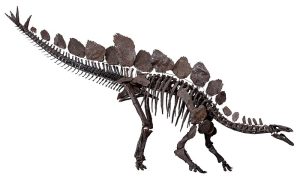Positive Shift: Amazon Rainforest Destruction Sees Sharp Decline in 2023

Highlights
- Amazon rainforest deforestation drops by 55.8%, raising hopes for climate change mitigation.
- Pro-conservation policies in Brazil and Colombia contribute to the positive shift.
- The decline reinforces the Amazon’s vital role in curbing global warming.
- Brazil, Colombia, Peru, and Bolivia collectively show reduced forest loss.
- Success in cutting deforestation strengthens Amazon countries’ position for conservation funding.
- A 55.8% drop in old-growth forest loss is recorded, marking the lowest since 2019.
- The Amazon is estimated to store over 37 billion metric tons of carbon.
- Global commitment to stop deforestation appears more achievable with the observed decline.
- Decreasing deforestation leads to a significant drop in greenhouse gas emissions.
- Brazil sees a 59% reduction, Colombia 66.5%, and Bolivia nearly 60% less forest loss.
- The decline in deforestation empowers Amazon countries for COP28 climate summit negotiations.
- MAAP’s ongoing satellite-based analysis reflects continuous efforts to address environmental challenges.
In a noteworthy shift of events for the Amazon rainforest, the rate of destruction has seen a substantial decline of 55.8% compared to the same period last year, bringing a glimmer of hope to this crucial region’s fight against climate change. The insightful analysis comes from the nonprofit Amazon Conservation’s MAAP forest monitoring program, shedding light on positive developments across the nine Amazon countries.
“This data suggests there’s still hope for the Amazon,” voiced Matt Finer, an ecologist and the director of MAAP. Acting as the world’s largest rainforest, the Amazon plays a pivotal role in combatting global warming by absorbing considerable amounts of carbon dioxide.
This decline aligns with a noticeable shift toward pro-conservation governance, particularly evident in Brazil and Colombia. Analysts attribute the reduction in deforestation to strengthened environmental law enforcement in Brazil, a change that coincided with President Luiz Inacio Lula da Silva taking office on January 1. Lula’s predecessor, Jair Bolsonaro, had favoured clearing rainforest land for various purposes.
The success in curtailing deforestation is anticipated to empower Amazon countries in their pursuit of conservation funding at the upcoming United Nations COP28 climate summit.
As per MAAP’s analysis, old-growth forest loss in the Amazon from January 1 to November 8 decreased to 9,117 square kilometers, marking a 55.8% decline from the same period in 2022. Though substantial, this represents the lowest level since at least 2019.
Carlos Nobre, an earth systems scientist at the University of Sao Paulo, expressed his excitement, calling the data “wonderful news” and expressing optimism that the Amazon can meet the global commitment to halt deforestation by the end of the decade, a pledge made by over 100 countries in 2021.
MAAP’s analysis, incorporating NASA data, estimates that Amazon houses over 37 billion metric tons of carbon, equivalent to roughly 2.5 times the greenhouse gas emissions from all global sources in 2022. This data underscores the critical role of the Amazon in regulating the climate.
While the report paints a positive picture, it acknowledges some gaps in the data, suggesting that the carbon estimate may be on the conservative side. The data also highlights the regions with the highest carbon levels, including the southwestern Amazon in Peru and the northeast in Guyana, Suriname, and parts of Brazil and Venezuela.
Deforestation stands as the largest contributor to greenhouse gas emissions in Amazonian countries. As the rate of destruction diminishes, the substantial reduction in emissions will fortify the position of Amazon countries in the upcoming United Nations COP28 climate negotiations.
Brazil, housing 60% of the Amazon, has played a pivotal role in the decline, witnessing a 59% drop in primary forest loss. Other countries, including Colombia, Peru, and Bolivia, have also exhibited declines of 66.5%, 37%, and nearly 60%, respectively.
While the data covers up to November 8, the remainder of the year typically witnesses lower deforestation rates due to heavy rains. Finalized annual figures are expected to show a slight increase, as indicated by MAAP’s analysis.
This positive trend in preserving the Amazon rainforest underscores the impact of policy changes and environmental initiatives, providing a hopeful outlook for the conservation of this vital ecosystem.















